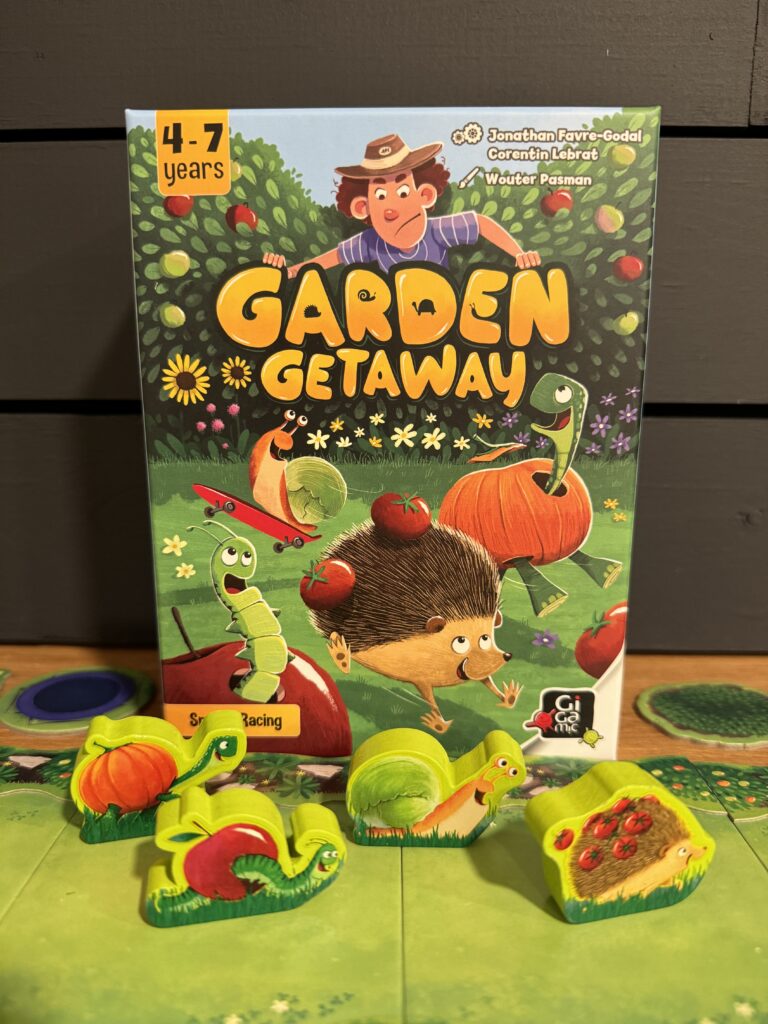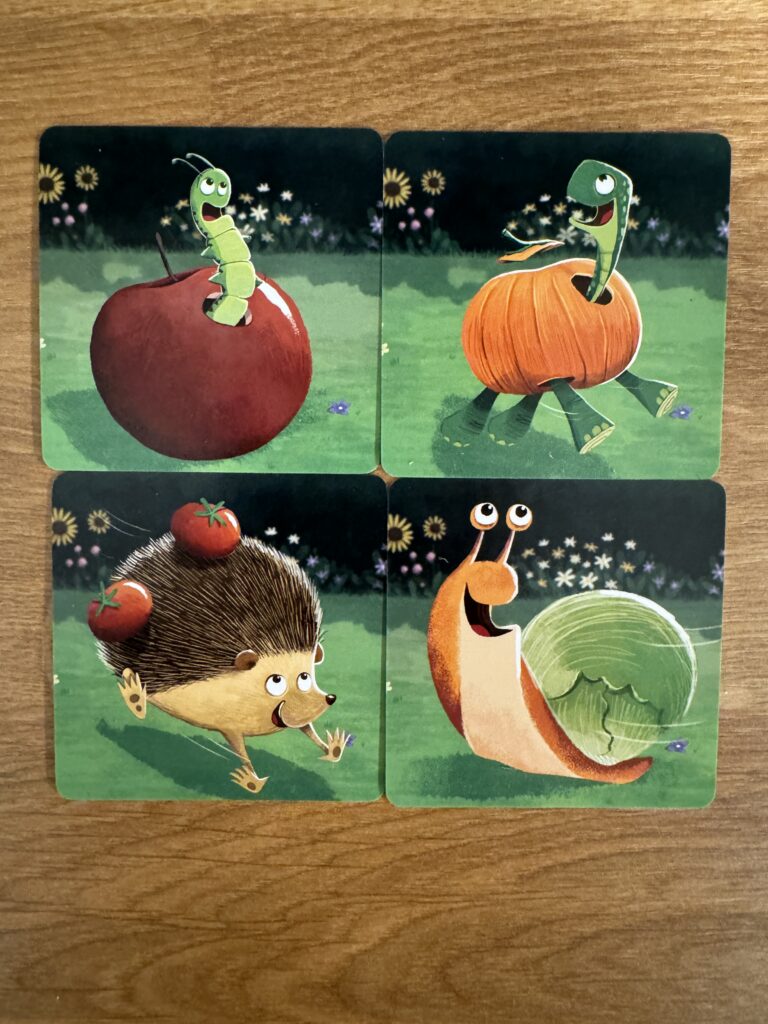We are all aware of horse races, but have you ever wondered about races for garden critters? That’s right, in the Garden Getaway board game by Gigamic, you will be helping a snail, hedgehog, turtle, and worm evade the Gardener, hopefully escaping with the garden’s bounty!
Garden Getaway is designed by Jonathan Favre-Godal, and Corentin Lebrat, posing the situation of a bunch of hungry critters crashing the Gardener’s life work: a deliciously abundant garden just ripe for the picking! Framed as a roll-and-move style game, there is a bit of extra strategy baked in as the critters try to be first to cross the finish line. Your goal is to try and make your chosen Animal be the frontrunner!
With plenty of ways to tailor this game to various age groups, the Garden Getaway board game will allow you to continue playing once the basics have been mastered.
Does playing the Garden Getaway board game completely whet our appetites? Let’s dive in and find out!
Garden Getaway Gameplay and Review
To set up the Garden Getaway board game, the Garden tiles are all placed in a row to create the racetrack. All four of the Animal tokens are placed at the start, where they will begin to rev their proverbial engines. Each player will then draw an Animal card – or assign a card if somebody really wants to cheer for a specific Animal – which represents the Animal that they’ll be hoping wins.
On their turn, each player will roll two dice and choose which of the two dice that they want to resolve. The red die only consists of moving the indicated Animal forward one space, while the yellow die has a combination of effects. The yellow die could have you move an animal forward, backward, or force you to take the result of the red die instead.
In the easier version of the game, none of the Garden tiles have any effects, but the more advanced version will feature tiles that trigger some kind of effect when they are landed on. The purpose of only having tiles trigger once is because they are used as a catchup mechanism; only the Animal that is furthest back can trigger the effects when they move forward and leave their tile.
Now, by the rules once a tile effect has been triggered, it doesn’t trigger again for the rest of the game. However, I could see an iteration of the rules where tiles could get triggered multiple times, which would be a very chaotic game indeed!
Whichever Animal reaches the Gate first, wins!
For the youngest of gamers, I would suggest changing the rules even further to make the game a strict roll-and-move where you only roll the red die. You can also give multiple Animal cards to increase the odds of them winning, or you could thematically add in some ‘world events’ that impact the game to do so as well. I’ve made it so Animals get stuck in a patch of mud thanks to the Gardener’s overwatering or I’ve also had Animals ingest potent pumpkin seeds to give them a little extra oomph. That’s probably the Gamemaster inside, but children are much more inclined to enjoy games when they do well, so long as they don’t feel like they’re being handed the win on a platter.
This essentially gives three varieties of the Garden Getaway board game depending on the ages of the gamers, increasing in difficulty. I really do like the Garden tile effects when they are in play because they keep the race more interesting and tight. Having the option between two dice also brings an element of choice and strategy for the kids’ to determine what might be best for their given situation.
I’m also very appreciative that the take-that interaction is fairly uncommon, as sending an Animal back one space is only a single face on the yellow die. It can still happen at a 1/6 chance, so keep that in mind if your have kids that get really upset when things hamper their route to victory.
One way that you might combat this completely is simply by rolling the red die two times, and then letting the player choose between those two results. You could theoretically end up with four choices of Animals to move forward in that case! Alternatively, you could have a reroll if the ‘move backwards’ face comes up on the yellow die too. Lots of options there.
Something else that I employed with the Garden Getaway board game if you aren’t playing with a full table of 4 is the way that Animals are assigned. In a 2-player game, you can give 2 Animals to each player. With 3 players, each turn I had the spare animal rotate to the next player in line when it’s their turn. Then, you always have two Animals that you’re working towards on your turn, although you might be helping another player win if you’re not careful.
The reason why I did this was because I didn’t really like having animals unassigned so that the ‘game might win’ instead of a player. Not only can that be harder to explain to a younger player, but I felt that I’d rather let players have more chances of winning than fewer.
Garden Getaway: Yum Yum!
The Garden Getaway board game adds a fun interpretation of the Peter Rabbit story, gamifying the race of the garden critters after they blatantly steal from the Gardener. He’s just out here trying to grow some produce; leave him alone! But actually I found this to be a nice introduction for kids to the concepts of dice rolling, low-key strategy, and making decisions. Plus there’s always a herd of rabbits outside in our neighborhood chomping away at gardens, so I feel for the Gardener a little bit.
You can find the Garden Getaway board game in the USA through Hachette Boardgames, or try to find it at your FLGS!
Disclaimer: Nerds on Earth was provided a copy of Garden Getaway from Hachette Boardgames in exchange for an honest review.



